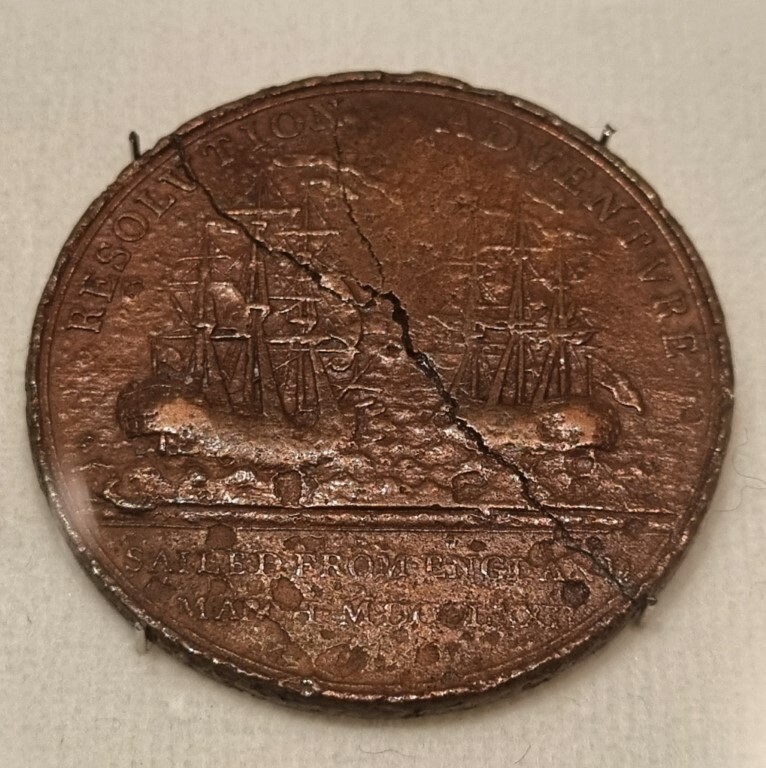by Dr Adele Jackson
Today marks the 250th anniversary of one of the most significant milestones in Antarctic exploration and Antarctic art.
On 17 January 1773, Captains James Cook and Tobias Furneaux sailed HMS Resolution and HMS Adventure beyond 66° 33’ southern latitude and in doing so achieved the first recorded crossing of the Antarctic Circle. On board were expedition artists William Hodges and George Forster who created the first known images of the icy world they found in the far south.
![William Hodges, Ice Islands [with the Resolution and Adventure], 1773. Mitchell Library, State Library of New South Wales.](https://cms.canterburymuseum.com/assets/William-Hodges-Ice-Islands-Medium.jpg?v=1680141166)
The voyage was the second in a series of three that Cook led to the southern and Pacific regions. Finding the fabled southern continent was one of the expedition aims. The three voyages (1768–1771, 1772–1775 and 1776–1780) would bind together the cultural histories of Aotearoa New Zealand and Antarctica.
A small round medal found in Queen Charlotte Sound in 1860, now held in Canterbury Museum’s numismatics collection, has a direct link with the Antarctic Circle crossing. Commissioned by Joseph Banks, botanist on board the first expedition, the Resolution and Adventure medal was designed specifically for the second voyage with one face featuring an image of the two expedition ships. Struck in copper-coloured metal alloy, they were produced to be given as gifts during encounters with local people when making landfall.

A rendezvous point within Queen Charlotte Sound, a place where Cook had anchored 2 years previously, was agreed before the ships sailed south, just in case they became separated in the Southern Ocean. After successfully crossing the Circle, but not finding any sign of a southern continent, dense fog parted the vessels. They reconnected at Meretoto (Ship Cove) where the medals would have been freely given to local iwi.
One of these medals, found on Arapaoa Island, was gifted to James Hayter Jackson around 1864. Jackson was one of the first whalers to make Aotearoa his home. Jackson’s son, also James, donated the medal and the whaling skiff Swiftsure to Canterbury Museum in 1914.
This well-travelled item that connects Antarctic and Aotearoa history will be on display in Canterbury Museum’s pop-up venue at a city centre site soon to be confirmed.





